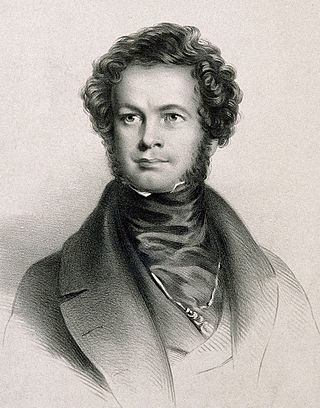Related Research Articles

The Calgary Sun is a daily newspaper published in Calgary, Alberta, Canada. It is currently owned by Postmedia Network. First published in 1980, the tabloid-format daily newspaper replaced the long-running tabloid-size The Albertan soon after it was acquired by the publishers of the Toronto Sun. The newspaper, like most of those in the Canadian Sun chain, is known for short, snappy news stories aimed primarily at working-class readers. The layout of the Calgary Sun is partially based on that of British tabloids.

Bath is a constituency in the House of Commons of the Parliament of the United Kingdom represented by Wera Hobhouse of the Liberal Democrats.

The Kingston Whig-Standard is a newspaper in Kingston, Ontario, Canada. It is published four days a week, on Tuesday and Thursday to Saturday. It publishes a mix of community, national and international news and is currently owned by Postmedia. It has ISSN 1197-4397.
Dundalk was a parliamentary borough constituency in Ireland, which returned one Member of Parliament (MP) to the House of Commons of the Parliament of the United Kingdom. It was an original constituency represented in Parliament when the Union of Great Britain and Ireland took effect on 1 January 1801, replacing the Dundalk constituency in the Parliament of Ireland.
Bedfordshire was a United Kingdom Parliamentary constituency, which elected two Members of Parliament to the House of Commons of England from 1295 until 1707, then the House of Commons of Great Britain until 1801 and the House of Commons of the United Kingdom until 1885 when it was divided into two constituencies under the Redistribution of Seats Act 1885.

Clitheroe was a parliamentary constituency in Lancashire.
Rye was a parliamentary constituency centred on the town of Rye in East Sussex. It returned two Members of Parliament to the Parliament of England before 1707, Parliament of Great Britain until 1801 and the House of Commons of the Parliament of the United Kingdom until its representation was halved under the Reform Act 1832.
Pontefract was an English parliamentary constituency centred on the town of Pontefract in the West Riding of Yorkshire, which returned two Members of Parliament to the House of Commons briefly in the 13th century and again from 1621 until 1885, and one member from 1885 to 1974.

Marylebone was a parliamentary constituency in Middlesex, England from 1832 to 1885. The parliamentary borough formed part of the built up area of London, and returned two members to the House of Commons of the UK Parliament and was created under the Reform Act 1832. It was abolished by the Redistribution of Seats Act, 1885 which split it into 8 seats.
The Cheap Repository Tracts consisted of more than two hundred moral, religious and occasionally political tracts issued in a number of series between March 1795 and 1817, and subsequently re-issued in various collected editions until the 1830s. They were devised by Hannah More and intended for sale or distribution to literate poor people, as an alternative to what she regarded as the immoral traditional broadside ballad and chapbook publications. The tracts proved to be enormously successful with more than two million copies sold or distributed during the first year of the scheme.
Tynemouth and North Shields was a parliamentary borough constituency represented in the House of Commons of the Parliament of the United Kingdom between 1832 and 1885. It elected one Member of Parliament (MP) by the first-past-the-post system of election.

Edmund Evans was an English wood-engraver and colour printer during the Victorian era. He specialized in full-colour printing, a technique which, in part because of his work, became popular in the mid-19th century. He employed and collaborated with illustrators such as Walter Crane, Randolph Caldecott, Kate Greenaway and Richard Doyle to produce what are now considered to be classic children's books. Little is known about his life, although he wrote a short autobiography before his death in 1905 in which he described his life as a printer in Victorian London.

Frederic Hervey Foster Quin was the first homeopathic physician in England.
James Savage (1767–1845) was an English antiquary, who worked as printer, bookseller, librarian and newspaper editor.

William Shaw"of the strand" (1797–1853) was a British agricultural writer, editor and translator, first editor of the agricultural journal Mark Lane Express, and of The Farmer's almanac and calendar, and co-founder of the Farmers Club in 1842. He is known for advocating agricultural reforms and improvements.

Lloyd's Evening Post, also known as The London Packet and Lloyd's Evening Post and British Chronicle, was a British evening newspaper published tri-weekly in London from 1757 to 1808. Founded shortly after the London Chronicle and similar in format, it came out on Monday, Wednesday and Friday, alternating in "friendly rivalry" with the London Chronicle which came out on Tuesday, Thursday, and Saturday.
The Irish Farmers Journal is an Irish weekly newspaper.
Gallant Schemer was launched in 1799 at Falmouth. A French privateer captured her in 1805, but she was back in British hands by 1808. She then traded with South America and the Mediterranean. A French privateer captured her in 1813.
Rachel Prescott was a British poet and philanthropist. She wrote about philanthropy and good works and left her own estate to found a charity.
References
- James Grant. The Great Metropolis. Third Edition. Saunders and Otley. Conduit Street, London. 1838. First Series. volume 2. p 128 et seq. Reprinted in Foster's Cabinet Miscellany, New York, Theodore Foster, 1838, volume 1, p 227 et seq.
- ↑ A Catalogue of Books, Newspapers, &c. Printed by John Bell, of the British Library, the Morning Post, Bell's Weekly Messenger, &c. [...] Exhibited at the First Edition Club, London, 15 April-May 5, 1931 (London, 1931).
- ↑ Prospectus. ESTC citation no. T124125.
- ↑ J. C. Reid, Bucks and Bruisers: Pierce Egan and Regency England (London, 1971), p. 28.
- ↑ Morison, Stanley (2009). "The Weekly Messenger as an agricultural newspaper". John Bell, 1745-1831: A Memoir. Cambridge U. Press. p. 54. ISBN 9780521143141.
- ↑ Evans and Ruffy's Farmers' Journal, National Library of Australia
- ↑ Brake, Laurel; Demoor, Marysa, eds. (2009). "Bell's Weekly Messenger". Dictionary of Nineteenth-century Journalism in Great Britain and Ireland. Academia Press. p. 47. ISBN 9789038213408.